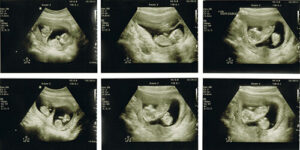Detecting an Early Miscarriage
A miscarriage is that unfortunate state of affairs when a pregnancy gets spontaneously terminated before 20 weeks of gestation. If the termination occurs within the first 12-14 weeks, it’s called an early miscarriage and when it occurs by around the 20th week, it’s referred to as a late miscarriage. Whatever the timing, it’s a traumatic experience for the mother and is followed by a sense of grief and loss; it might even lead to depression in some.
It’s been estimated that about 50% of all pregnancies end up in miscarriages, with most occurring so early that the woman doesn’t even realize she had been pregnant. Of the recognized pregnancies, about 15-25% end up as miscarriages with about 80% of them occurring within the first trimester. A healthy woman who miscarries once will most probably not miscarry a second time. And if a woman has miscarried three times, then she needs medical intervention as there is a pathological cause present.
Women who are over the age of 35, have underlying diseases like diabetes or thyroid disease, have an ‘incompetent’ or weak cervix or are too thin or obese, all have higher chances of miscarrying. Most miscarriages happen due to fatal genetic problems in the fetus. Other causes of miscarriage include hormone problems, immune system responses, uterine abnormalities, infections and physical problems in the mother.
The early or first signs of miscarriage include a dull lower back pain or feeling of pressure associated with cramping of varying degrees. There could be vaginal spotting or outright bleeding. Other than that, there could be changes in the type of vaginal discharge. Instead of being milky-colored mucus, it could be tinted pink and have the texture of soggy tissue paper. In such circumstances, avoid the use of tampons and use sanitary pads instead as it can lead to infection. If you experience fever, chills, dizziness or fainting along with a foul –smelling vaginal discharge, you should see your doctor at the earliest.
The symptoms of an early miscarriage are dependent on the age of the pregnancy and appear similar to a heavy period; depending on the gestation period, there will be more cramping followed by heavier bleeding than usual and the presence of bigger clots. Others may experience outright labor-like cramps with golf ball-size clots; some might even undergo the distress of seeing the early fetus.
The duration of the bleeding depends on how soon the pregnancy tissues are pushed out; it could take anything between 1-3 weeks, but if longer time is taken, then medical intervention will be needed. There are three types of miscarriages:
- A complete miscarriage where all the pregnancy tissues have been passed out.
- An incomplete miscarriage where some of the pregnancy tissues are still retained within the uterus.
- A missed miscarriage where the fetus is no longer viable, but hasn’t been passed out.
The obstetrician will carry out blood tests, physical examination, and check symptoms before finally doing an ultrasound scan to confirm if a miscarriage has indeed taken place.






